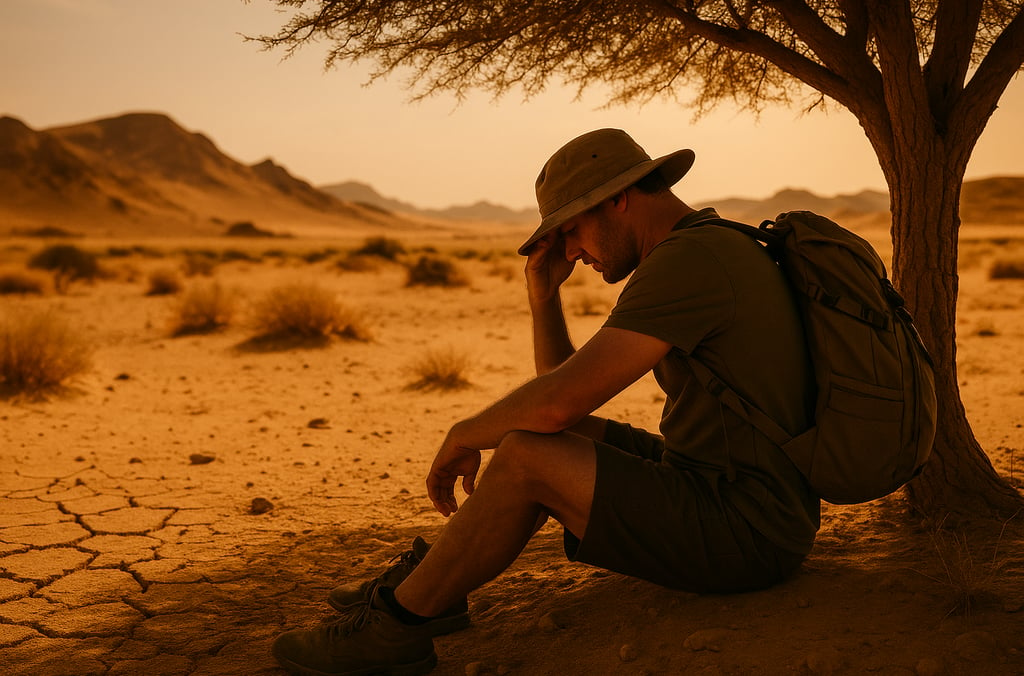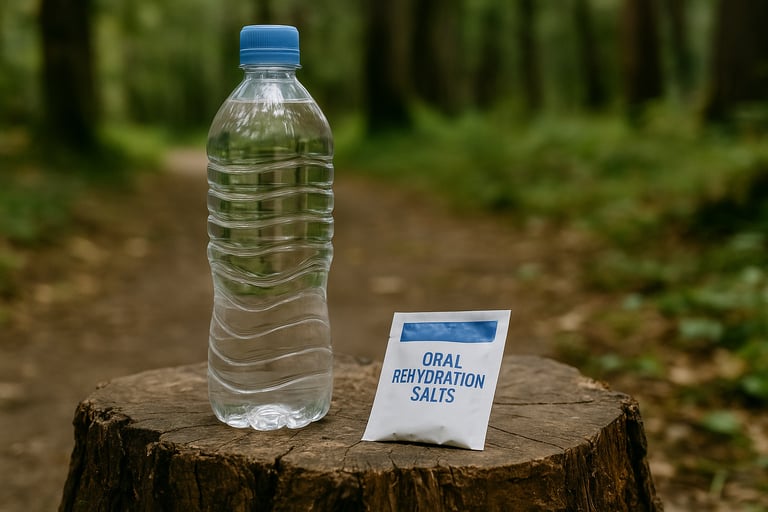Wilderness Dehydration Warning Signs and How to Treat Them
Learn how to recognize the early and severe signs of dehydration in the wilderness — and what to do about it. Essential survival info for hikers, preppers, and outdoor explorers.


Wilderness Dehydration Warning Signs and How to Treat Them
Why Recognizing Dehydration in the Wild Matters
When you're hiking, camping, or surviving off-grid, dehydration can sneak up fast — and its effects can go from annoying to dangerous before you even realize what’s happening. Unlike in everyday life, where a water bottle is always nearby, in the wilderness you're relying on knowledge, preparation, and awareness. Noticing the early signs of dehydration in the wilderness could be the difference between staying strong and safe, or collapsing when help is miles away.
Our bodies lose water constantly through sweat, breathing, and even digestion. When you're moving around in nature — especially in dry climates or at high altitudes — this water loss accelerates. Knowing how to recognize dehydration symptoms and respond quickly is a survival skill every outdoor enthusiast should have in their back pocket.
Early Signs of Dehydration in the Wilderness
The early signs of dehydration are subtle, but important. Dry mouth, headaches, dizziness, and reduced urine output are some of the first indicators that your body may be running low on fluids. You might feel more tired than usual, or notice that you’re not sweating as much despite physical effort.
One common mistake is assuming you're fine because you're not thirsty. But by the time thirst kicks in, you're already mildly dehydrated. Checking the color of your urine is one of the easiest field tests: if it’s dark yellow or amber, it’s a clear sign you need more water.
Understanding what dehydration looks like is only half the battle, knowing where to find clean water in the wild is just as important. Techniques like using plants and vines to locate water or setting up a Solar Still for water collection can help you source hydration even in dry environments. Practicing these methods in advance ensures you're prepared when the need becomes urgent.
Moderate to Severe Symptoms You Shouldn’t Ignore
If mild dehydration isn’t addressed, the symptoms become more severe. Muscle cramps, nausea, rapid heartbeat, confusion, and even fainting can occur. Your skin might feel dry and lose elasticity. At this point, your body is struggling to function normally, and continuing to hike or exert yourself can lead to serious consequences — including heat exhaustion or heat stroke.
Cognitive performance drops sharply during dehydration, so even basic decision making can become compromised. That’s why treating it early, before it progresses, is critical in a survival setting.
Quick and Effective Ways to Rehydrate
The first and most important way to combat dehydration is to hydrate yourself properly from the beginning. And even then, as you exert yourself more, the more fluids you will use. If you catch it early, drinking water consistently in small sips is usually enough. Avoid gulping large amounts all at once, as it can upset your stomach. Electrolyte powders or oral rehydration salts are great additions to any survival kit, as they help your body retain water more efficiently and replace lost minerals.
If you’re low on supplies, coconut water (if available) or even a pinch of salt and sugar mixed into filtered water can help stabilize fluid levels. Make it a habit to drink at regular intervals — not just when you feel thirsty.
How to Prevent Dehydration on the Trail
The best defense is always a good offense. Before any hike or wilderness outing, hydrate well. Carry enough water for the terrain and climate, and know where potential water sources are along your route. If possible, pack a water filter or purification tablets in case you need to resupply.
Clothing matters too — light, breathable layers help minimize sweat loss, and wearing a wide-brimmed hat can keep you cooler under the sun. Pay attention to your body, rest in the shade often, and be especially cautious with children and older adults, who are more vulnerable to dehydration.
Even with solid preparation, sometimes you run out of water or need to purify what you find. That’s why it’s always smart to carry tools like water purification tablets or know how to build a DIY survival water filter. And when in doubt, remember you can still purify water without a filter using heat, evaporation, or chemical methods that don’t require gear.
Final Thoughts: Don’t Underestimate Dehydration
In survival scenarios, water isn’t optional — it’s everything. Learning to recognize the warning signs of dehydration in the wilderness, and acting quickly when they appear, is a skill every outdoor adventurer should master. Whether you're deep in the backcountry or just out for a day hike, knowing how to manage hydration is one of the smartest and most vital things you can do for your safety and well being.


© 2025. All rights reserved About | Privacy Policy | Terms and Conditions | Affiliate Disclosure | Disclaimer


